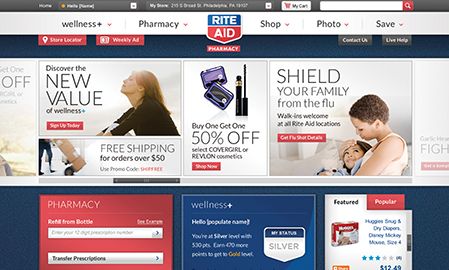Razorfish Healthware’s 2013 was notable for many reasons, but none more so than for the fact that it finally got a chance to go to work.
The August 2012 merger of Razorfish Health and Publicis Healthware International that birthed the Publicis-owned digital supershop was unlike most in the healthcare space, in that its scale was enormous. “It had been an almost three-year-long integration process,” says global president Roberto Ascione. “You had seven different agencies in five countries coming together to create one single global brand.” The end product was a firm that operates in 10 countries and recently pushed past the 300-employee mark.
Left unsaid by Ascione: Such an entity doesn’t coalesce into a whole overnight. That’s why Razorfish’s comparatively low-key 2013, in which it “only” tended to client work and new-business efforts, should be considered such a success. Its leaders promised the emergence of a certain type of company and they delivered on that promise.
“Cultural integration and aligning globally presents unique challenges, but it also presents unique opportunities,” Ascione notes. To that end, Razorfish leveraged its digital heritage to move into what Ascione calls the “business transformation” space. The firm’s new focus is on the future and, specifically, helping clients big (AstraZeneca, Johnson & Johnson, Medtronic) and slightly less big (ConvaTec, Helsinn, Nicox) rise to meet the technological challenges confronting them.
Ascione knows that’s no small charge, but says that the firm’s longstanding digital/technological focus gives it credibility few competitors can match. “There’s a story about being first,” he acknowledges. “We were among the first to pop into the mobile space and [create programs for] the iPad. But so-called digital agencies—to me, that’s the new normal.” Razorfish’s new favorite toys? Google Glass, augmented reality and gamification.
Asked whether clients are ready to venture into those uncharted waters, Ascione acknowledges the industry’s traditional reluctance to move too quickly. That said, he senses a spirit of adventurousness— whether motivated by interest or fear of falling behind.
“Are we like the music or gaming industries? No,” he explains. “But I’ve been around this industry for 15 years and I don’t recall a moment like this. It’s much more dynamic than in the past.” The firm bolstered its leadership ranks to accommodate the increased interest, adding Edward Nathan as global head of creative and strategy and Robert Harrison as head of client engagement and delivery in Europe.
Razorfish’s futurist perspective informs the agency’s growth strategy. As opposed to the usual entries on this-year-and-beyond to-do lists (grow organically, etc.), Razorfish hopes to forge relationships with gaming and insurance companies. With those companies, Razorfish hopes to create new, immersive experiences.
“We’re always going to do the website work and the mobile work that keeps the lights on,” Ascione jokes. “But there’s opportunity now for more.”
Along those lines, Ascione hopes Razorfish comes to be viewed as a matchmaker of sorts, one that connects pharma and healthcare clients with next-generation technologists and startups. “We’ve been having three-way conversations on how to gamify a brand experience, or to add an immersive component… Introducing the new opportunities made possible by innovation has been the most exciting thing we’ve been doing in the last 18 months.”
From the July 01, 2014 Issue of MM+M - Medical Marketing and Media








